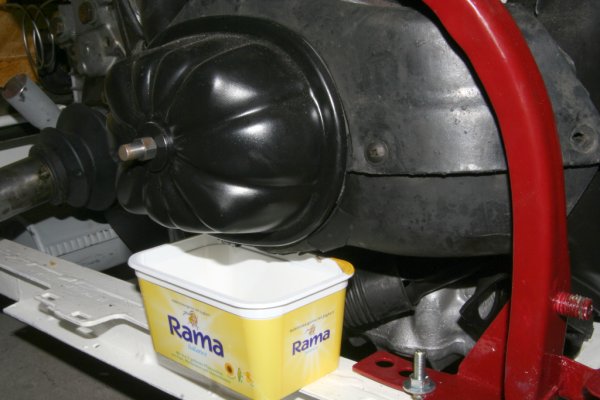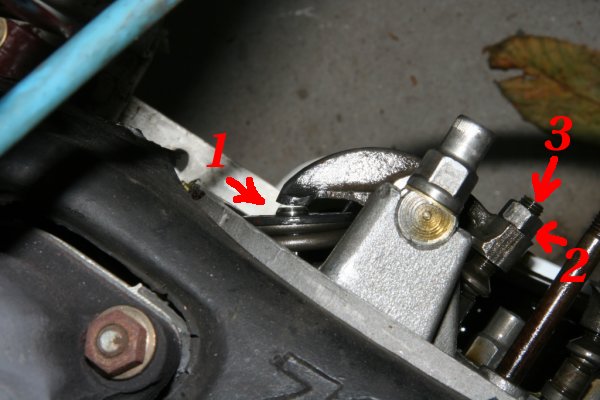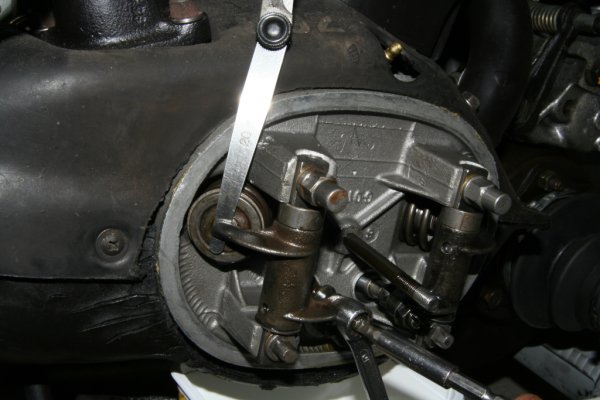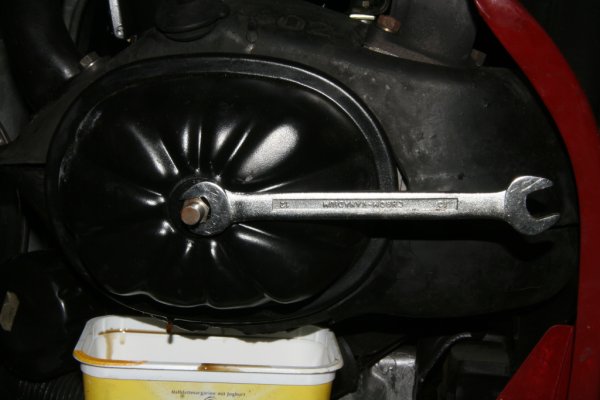|
|
|
Back to lighting Forward to seatbelts The valve clearance should be controlled all 20.000km, latest however, if the engine runs non circular and other error causes can be excluded. A too small clearance leads in extreme cases to the fact that the valves do not close correctly any longer, whereby the exhaust valve is thermally strongly stressed by the hot exhaust gases and can break off.That is definitely not very good for the duck engine. Too large clearance causes a clear power loss and a 2CV need's all horsepower it can get. The attitude takes place with COLD engine.  Since there is always oil in the cylinder head cover, place a box underneath. Now the central screw can be loosened with the help of a 12mm wrench. If the cover still sticks, do not use a screwdriver or something like that! Instead use a rubber hammer or a light metal hammer with a peace of wood underneath and knock slightly from all sides, until it falls down.  Now the valve clearance can be adjusted to 0.2 mm at (1) characterized place. In addition the crankshaft must be turned into the correct postition first. The procedure, I am using, is called 'on dump' and is as follows: Attatch the starter crank and turn the engine until the exhaust valve of one cylinder is opened. Keep turning until the intake valve of the same cylinder begins to open and up to now both rocker arms are at the same height. Now the point 'on dump' is reached. Now the valve clearance at the two valves of the OPPOSITE cylinder can be adjusted. Control the clearence with the plate of 0,2mm strength. Pull in addition the rocker arm by hand to the rear, since this wedges possibly slightly and therefore no gap is recognized. The plate should be able to be pulled with slight resistance through the gap. Likewise if the sheet fits not at all through, or the larger copy (0,25mm) can be pulled through, the valve clearance must be corrected. Loosen the lock nut (2) with a 10mm wrench. Now the screw (3) can be turned in (gap becomes smaller) or out (gap becomes larger).  If the measure is correct, tightened the lock nut (2) again. Since the adjusting screw may turn also, fix it with a screwdriver. Check the clearence again after tightening, since it became smaller again by tightening the nut! It's fiddly but must be done very careful! If the clearence is correctly adjusted at the first cylinder, the crankshaft has to be turned until the valves are 'on dump' at this side. Now the valve clearance can be proofed on the opposite side.  Now put new gaskets into the cover of the cylinder heads. Don't tighten the cylinder head cover too firmly! The cover will be bent upward at the edge and thereby it's damaged. Possibly the rocker arms strike the cover and destroy it. Citroen gives a torque of 5-7Nm. That is too few for commercial torqe wrenches. To the illustration - 6Nm means, a force of 6N appears at the end of a wrench with the lenght of 1Meter. That corresponds to the weight of approx. 600Gramm. A 20cm wrench would have to be pressed with a force of 3kg at horizontal position. In the case of doubt rather tighten slightly, let the the engine work several minutes and check whether oil drops out. Tighten a little bit more and control again until everything is okay. Back to lighting Forward to seatbelts |